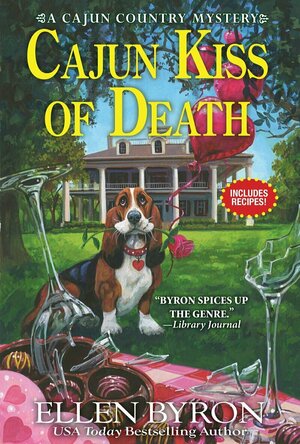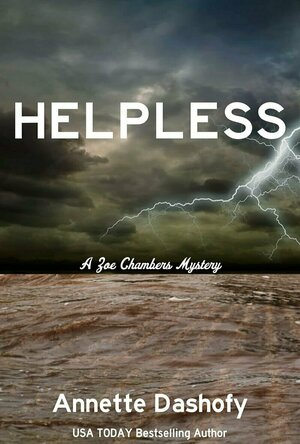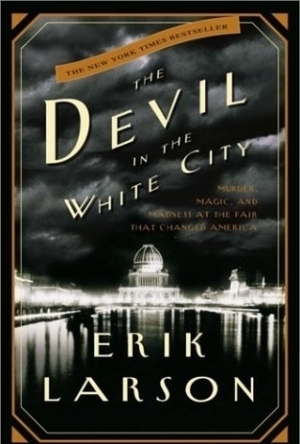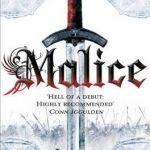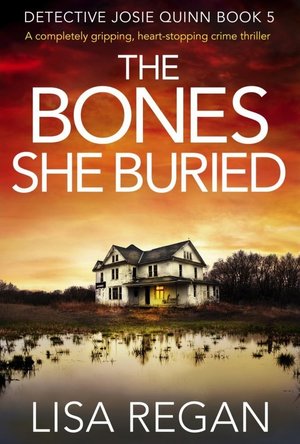Search
Search results

Tokyo Heat (Nights #3)
Book
I want him. I love him. But I don't know if he feels the same way about me — Gabe I cherish...
M_M Contemporary Romance

Bluescreen
Book
Los Angeles in 2050 is a city of open doors, as long as you have the right connections. That...
Sci-fi dystopian privacy trust friendship
Mark @ Carstairs Considers (2434 KP) rated Cajun Kiss of Death in Books
Aug 16, 2021 (Updated Aug 16, 2021)
Celebrity Chef Comes to Call
Valentine’s Day is fast approaching, and the town of Pelican, Louisiana, is buzzing about the new restaurant getting ready to open. It’s the latest from celebrity chef Phillippe Chanson, and this one will have an emphasis on Cajun food. However, Phillippe isn’t ingratiating himself with his new community, and several people have fights with him, including Maggie Crozat’s friend, JJ, the owner of a popular local restaurant, and Maggie’s own mother. The night of the restaurant’s official opening is more explosive than anyone planned, and in the aftermath, someone is dead. Will Maggie figure out what is going on?
It’s always a pleasure to return to Pelican. I absolutely love the characters, and the growth we’ve seen in them and their relationships continues here. There are several sub-plots, so something is always going on, and I had a hard time putting the book down. Since this is the last book planned in the series (at least for now), we get a wonderful epilogue that will leave fans very happy. As usual, there are recipes and a few notes on the reality behind the fiction at the end. Fans will be delighted with this visit, and if you haven’t met the characters yet, you need to fix that today.
It’s always a pleasure to return to Pelican. I absolutely love the characters, and the growth we’ve seen in them and their relationships continues here. There are several sub-plots, so something is always going on, and I had a hard time putting the book down. Since this is the last book planned in the series (at least for now), we get a wonderful epilogue that will leave fans very happy. As usual, there are recipes and a few notes on the reality behind the fiction at the end. Fans will be delighted with this visit, and if you haven’t met the characters yet, you need to fix that today.

Rumble of the Crumble (The Rhubarb Effect #7)
Book
Two alphas. That couldn’t work, could it? If it could, would Leonidis be able to open up his...
MM Paranormal Romance Shifters Weird & Wacky series
Mark @ Carstairs Considers (2434 KP) rated Helpless in Books
Mar 19, 2025 (Updated Mar 19, 2025)
Murder and Kidnapping in a Storm
With the remains of a tropical storm hitting the area, the last thing that Zoe Chamber-Adams and Pete Adams need is a criminal running around the area. But that’s just what they’ve got. They are called to a horrific scene on a neighbors’ farm. The wife has been shot, the husband left for dead, and their daughter kidnapped. As Pete tries to find the daughter before she is taken out of the area, Zoe tries to learn what she can from the husband. Will the storm help or hurt them?
This is more of a ticking clock thriller than a mystery, with the book taking place over the course of a day. As much as I love this series, this one was a bit of a letdown. I found Zoe’s portion of the story slowed the plot down, and I found it a very dark book, even by this series’ standards. On the other hand, the overall plot of the book was great and I was still always reluctant to set the book down. It was great spending time with Zoe and Pete, and I enjoyed seeing the updates we still got on the series regulars and some ongoing stories. Fans of this great series will still be glad they picked up this book.
This is more of a ticking clock thriller than a mystery, with the book taking place over the course of a day. As much as I love this series, this one was a bit of a letdown. I found Zoe’s portion of the story slowed the plot down, and I found it a very dark book, even by this series’ standards. On the other hand, the overall plot of the book was great and I was still always reluctant to set the book down. It was great spending time with Zoe and Pete, and I enjoyed seeing the updates we still got on the series regulars and some ongoing stories. Fans of this great series will still be glad they picked up this book.
Hadley (567 KP) rated The Devil in the White City: Murder, Magic, and Madness in Books
Jan 18, 2021
History (1 more)
Well-written
H.H. Holmes had many aliases and lives.
He's been a doctor and a licensed pharmacist, who then conned an old couple into selling their drug store to him where he preyed on young girls and ignorant customers that would buy whatever Holmes would tell them to buy, whether it were real or fake tonics.
He was a building owner who had a murder hotel secretly built with " a wooden chute that would descend from a secret location on the second floor all the way to the basement... ", "a room next to his office fitted with a large walk-in vault, with airtight seams and asbestos-coated iron walls. A gas jet embedded in one wall would be controlled from his closet...", "a large basement with hidden chambers and a sub-basement for the permanent storage of sensitive material. "
He owned and ran an alcohol-treatment company known as the Silver Ash Institute that claimed to have the cure for alcoholism.
He was a traveling business man, who had two wives and two children. He established the Campbell-Yates Manufacturing Company, which made nothing and sold nothing.
He was also labeled as America's first serial killer. His body count is unknown even today; his victims were frequently young women, which included stenographers and house wives. He was best known for convincing people who trusted him to sign him as the beneficiary of their life insurance policies, only to kill them and make it seem an accident so he could collect the money.
Holmes grew up in a small farming village in New Hampshire, where he briefly spoke about an early fear of a human skeleton that hung in a doctor's office: " 'I had daily to pass the office of one village doctor, the door of which was seldom if ever barred,' he wrote in a later memoir. 'Partly from its being associated in my mind as the source of all the nauseous mixtures that had been my childish terror (for this was before the day of children's medicines), and partly because of vague rumors I had heard regarding its contents, this place was one of peculiar abhorrence to me.' "... "Two children discovered Mudgett's [Holmes' real last name] fear and one day captured him and dragged him 'struggling and shrieking' into the doctor's office. 'Nor did they desist,' Mudgett wrote, 'until I had been brought face to face with one of its grinning skeletons, which, with arms outstretched, seemed ready in its turn to seize me. It was a wicked and dangerous thing to do to a child of tender years and health,' he wrote, ' but it proved an heroic method of treatment, destined ultimately to cure me of my fears, and to inculcate in me, first, a strong feeling of curiosity, and, later, a desire to learn, which resulted years afterwards in my adopting medicine as a profession.' "
Erik Larson's fourth book, the Devil in the White City, is only partly about Holmes and his dark trail of murder and lies. The story told is mostly centered around the planning and building of the 1893 World's Fair. The prologue opens with one of the architects aboard a ship long after the fair has ended - - - 1912 to be exact- - - where he begins to write of the fair in his diary. The next chapter continues on with Chicago competing against other major cities to win the rights to host the World's Fair. Chicago was not the ideal place for the fair because it was known for it's crime and slaughter houses - - - this was exactly why the politicians wanted it so badly there, so it would help to lighten the image of Chicago for the rest of the world. Even the local Whitechapel Club that had sprouted up after the infamous murders by Jack the Ripper, were excited to win the rights to host the fair in their city, and celebrated in a macabre way:
"Upon learning that Chicago had won the fair, the men of the Whitechapel Club composed a telegram to Chauncey Depew, who more than any other man symbolized New York and its campaign to win the fair. Previously Depew had promised the members of the Whitechapel Club that if Chicago prevailed he would present himself at the club's next meeting, to be hacked apart by the Ripper himself - - - metaphorically, he presumed, although at the Whitechapel Club could one ever be certain? The club's coffin, for example, had once been used to transport the body of a member who had committed suicide. After claiming his body, the club hauled it to the Indiana Dunes on Lake Michigan, where members erected an immense pyre. They placed the body on top, then set it alight. Carrying torches and wearing black hooded robes, they circled the fire singing hymns to the dead between sips of whiskey. The club also had a custom of sending robed members to kidnap visiting celebrities and steal them away in a black coach with covered windows, all without saying a word.
The club's telegram reached Depew in Washington twenty minutes after the final ballot, just as Chicago's congressional delegation began celebrating at the Willard Hotel near the White House. The telegram asked, 'When may we see you at our dissecting table?' "
There are chapters in-between, technically reading like a side story, that tell us about Holmes and his misdeeds in Chicago, but there just wasn't enough about Holmes that I could consider this a True Crime book, nor an informative book about Holmes. Unfortunately, when the reader begins to really dwell into the story of Holmes, it's quickly ended by having two or more chapters about the building of the World's Fair. One interesting point about the story is that the reader does get to see how many inventions were brought to light because of the Fair, such as the invention of the Ferris Wheel. Larson's writing is very coherent and the descriptions are so well done that the reader is practically transported back to the late 1800s, yet, before I finished the book, I felt misled by the title... then coming across everything that happened to not only the Fair, but the people who were involved with it, it's hard not to wonder if the whole thing was cursed, thus the Devil being in the White City.
One of the side stories I did really enjoy was the slow unfolding of a man named Prendergast. A delusional young man who ran one of the groups of paperboys in Chicago, who was also obsessed with politics, became a determined supporter of Mayor Harrison; after Harrison was voted into office again, Prendergast believed it was because of him and the letters he sent out to numerous politicians and potential voters. Prendergast also believed he deserved a chair on the council for Harrison's re-election, for which he even showed up at City Hall to take over. This incident was the straw that broke the camel's back for Prendergast - - - he was humiliated when the people there laughed in his face. Prendergast then decided to take matters into his own hands, and bought a revolver. The day before the Fair would end, Prendergast showed up at Harrison's home and shot him. Harrison died minutes later. Prendergast turned himself in for the murder as soon as he left Harrison's residence. When asked why he had done it, Prendergast responded: " ' Because he betrayed my confidence. I supported him through his campaign and he promised to appoint me corporation counsel. He didn't live up to his word.' "
This book has been voted as a top True Crime must-read novel. I don't agree with this. As I said before: Holmes' chapters are few; eighty percent of this book is about the building of the World's Fair. As a True Crime junkie, I didn't enjoy this one, but also as a history junkie, I enjoyed learning about the Fair and everything that happened. I can't recommend this book to TC fans or horror fans. It's mostly history and architecture.
He's been a doctor and a licensed pharmacist, who then conned an old couple into selling their drug store to him where he preyed on young girls and ignorant customers that would buy whatever Holmes would tell them to buy, whether it were real or fake tonics.
He was a building owner who had a murder hotel secretly built with " a wooden chute that would descend from a secret location on the second floor all the way to the basement... ", "a room next to his office fitted with a large walk-in vault, with airtight seams and asbestos-coated iron walls. A gas jet embedded in one wall would be controlled from his closet...", "a large basement with hidden chambers and a sub-basement for the permanent storage of sensitive material. "
He owned and ran an alcohol-treatment company known as the Silver Ash Institute that claimed to have the cure for alcoholism.
He was a traveling business man, who had two wives and two children. He established the Campbell-Yates Manufacturing Company, which made nothing and sold nothing.
He was also labeled as America's first serial killer. His body count is unknown even today; his victims were frequently young women, which included stenographers and house wives. He was best known for convincing people who trusted him to sign him as the beneficiary of their life insurance policies, only to kill them and make it seem an accident so he could collect the money.
Holmes grew up in a small farming village in New Hampshire, where he briefly spoke about an early fear of a human skeleton that hung in a doctor's office: " 'I had daily to pass the office of one village doctor, the door of which was seldom if ever barred,' he wrote in a later memoir. 'Partly from its being associated in my mind as the source of all the nauseous mixtures that had been my childish terror (for this was before the day of children's medicines), and partly because of vague rumors I had heard regarding its contents, this place was one of peculiar abhorrence to me.' "... "Two children discovered Mudgett's [Holmes' real last name] fear and one day captured him and dragged him 'struggling and shrieking' into the doctor's office. 'Nor did they desist,' Mudgett wrote, 'until I had been brought face to face with one of its grinning skeletons, which, with arms outstretched, seemed ready in its turn to seize me. It was a wicked and dangerous thing to do to a child of tender years and health,' he wrote, ' but it proved an heroic method of treatment, destined ultimately to cure me of my fears, and to inculcate in me, first, a strong feeling of curiosity, and, later, a desire to learn, which resulted years afterwards in my adopting medicine as a profession.' "
Erik Larson's fourth book, the Devil in the White City, is only partly about Holmes and his dark trail of murder and lies. The story told is mostly centered around the planning and building of the 1893 World's Fair. The prologue opens with one of the architects aboard a ship long after the fair has ended - - - 1912 to be exact- - - where he begins to write of the fair in his diary. The next chapter continues on with Chicago competing against other major cities to win the rights to host the World's Fair. Chicago was not the ideal place for the fair because it was known for it's crime and slaughter houses - - - this was exactly why the politicians wanted it so badly there, so it would help to lighten the image of Chicago for the rest of the world. Even the local Whitechapel Club that had sprouted up after the infamous murders by Jack the Ripper, were excited to win the rights to host the fair in their city, and celebrated in a macabre way:
"Upon learning that Chicago had won the fair, the men of the Whitechapel Club composed a telegram to Chauncey Depew, who more than any other man symbolized New York and its campaign to win the fair. Previously Depew had promised the members of the Whitechapel Club that if Chicago prevailed he would present himself at the club's next meeting, to be hacked apart by the Ripper himself - - - metaphorically, he presumed, although at the Whitechapel Club could one ever be certain? The club's coffin, for example, had once been used to transport the body of a member who had committed suicide. After claiming his body, the club hauled it to the Indiana Dunes on Lake Michigan, where members erected an immense pyre. They placed the body on top, then set it alight. Carrying torches and wearing black hooded robes, they circled the fire singing hymns to the dead between sips of whiskey. The club also had a custom of sending robed members to kidnap visiting celebrities and steal them away in a black coach with covered windows, all without saying a word.
The club's telegram reached Depew in Washington twenty minutes after the final ballot, just as Chicago's congressional delegation began celebrating at the Willard Hotel near the White House. The telegram asked, 'When may we see you at our dissecting table?' "
There are chapters in-between, technically reading like a side story, that tell us about Holmes and his misdeeds in Chicago, but there just wasn't enough about Holmes that I could consider this a True Crime book, nor an informative book about Holmes. Unfortunately, when the reader begins to really dwell into the story of Holmes, it's quickly ended by having two or more chapters about the building of the World's Fair. One interesting point about the story is that the reader does get to see how many inventions were brought to light because of the Fair, such as the invention of the Ferris Wheel. Larson's writing is very coherent and the descriptions are so well done that the reader is practically transported back to the late 1800s, yet, before I finished the book, I felt misled by the title... then coming across everything that happened to not only the Fair, but the people who were involved with it, it's hard not to wonder if the whole thing was cursed, thus the Devil being in the White City.
One of the side stories I did really enjoy was the slow unfolding of a man named Prendergast. A delusional young man who ran one of the groups of paperboys in Chicago, who was also obsessed with politics, became a determined supporter of Mayor Harrison; after Harrison was voted into office again, Prendergast believed it was because of him and the letters he sent out to numerous politicians and potential voters. Prendergast also believed he deserved a chair on the council for Harrison's re-election, for which he even showed up at City Hall to take over. This incident was the straw that broke the camel's back for Prendergast - - - he was humiliated when the people there laughed in his face. Prendergast then decided to take matters into his own hands, and bought a revolver. The day before the Fair would end, Prendergast showed up at Harrison's home and shot him. Harrison died minutes later. Prendergast turned himself in for the murder as soon as he left Harrison's residence. When asked why he had done it, Prendergast responded: " ' Because he betrayed my confidence. I supported him through his campaign and he promised to appoint me corporation counsel. He didn't live up to his word.' "
This book has been voted as a top True Crime must-read novel. I don't agree with this. As I said before: Holmes' chapters are few; eighty percent of this book is about the building of the World's Fair. As a True Crime junkie, I didn't enjoy this one, but also as a history junkie, I enjoyed learning about the Fair and everything that happened. I can't recommend this book to TC fans or horror fans. It's mostly history and architecture.

Magic Eraser - Remove Photo Background & Create Transparent PNG
Business and Utilities
App
It has never been easier to create transparent background images! Featuring automated background...
Ross (3284 KP) rated Malice: Book One of the Faithful and the Fallen in Books
Dec 1, 2017
The action (1 more)
The hints of the epic story still to come
The number of characters and places to try and remember (1 more)
A little long and derivative
This book, the first in a series of four, chronicles the beginning hints at the coming God-War, a time when the forces of good and evil will battle for the world (pretty standard fantasy fayre), with prophecies unfolding and battles for thrones.
The book moves between different character PoVs, which is fairly common these days, but I found some of the characters to be indistinguishable. For the first third of the book, if the PoV was Camlin, Kastell or Veradis I struggled to remember who he was or what he had been doing. This did start to improve around the halfway mark, but it is quite a slog at times to remember the events preceding this chapter.
The bulk of the book, however, follows Corban, a young blacksmith's son hoping to become a warrior some day, but is stuck working his da's forge, helping stablemaster Gar or apprenticing to healer Brina. His development over the book is well told, he doesn't suddenly become a master swordsman but at the same time we don't have to sit through chapter after chapter of him learning sword forms (Rand al Thor could learn a lot from Corban!).
Along the way, Corban has also become friends with a wild wolven (giant wolves hunted near extinction), whom he raised from a pup. Yes, exactly like the Stark children in GoT. Leave it.
The political intrigue and manoeuvring throughout the book is great as events seeming to be based on one king/queen's ambitions actually turn out to be based on another's treachery.
The battle scenes are well told and believable without the main characters always escaping unscathed.
The book finished with a number of deceptions uncovered and the main group of characters fleeing for their lives, with more secrets to be uncovered.
The book moves between different character PoVs, which is fairly common these days, but I found some of the characters to be indistinguishable. For the first third of the book, if the PoV was Camlin, Kastell or Veradis I struggled to remember who he was or what he had been doing. This did start to improve around the halfway mark, but it is quite a slog at times to remember the events preceding this chapter.
The bulk of the book, however, follows Corban, a young blacksmith's son hoping to become a warrior some day, but is stuck working his da's forge, helping stablemaster Gar or apprenticing to healer Brina. His development over the book is well told, he doesn't suddenly become a master swordsman but at the same time we don't have to sit through chapter after chapter of him learning sword forms (Rand al Thor could learn a lot from Corban!).
Along the way, Corban has also become friends with a wild wolven (giant wolves hunted near extinction), whom he raised from a pup. Yes, exactly like the Stark children in GoT. Leave it.
The political intrigue and manoeuvring throughout the book is great as events seeming to be based on one king/queen's ambitions actually turn out to be based on another's treachery.
The battle scenes are well told and believable without the main characters always escaping unscathed.
The book finished with a number of deceptions uncovered and the main group of characters fleeing for their lives, with more secrets to be uncovered.
Mark @ Carstairs Considers (2434 KP) rated Survive or Die in Books
Mar 7, 2019
World’s Worst Team Building Ever
The employees of Bender Clips are going on a corporate retreat. Jack Bender, the owner, has shut things down for a week and rented out the Survive or Die camp in the Colorado mountains. The camp was used as the location for a reality TV show of the same name a decade ago, and the host is still basking off the fame that show brought him. Jack has a surprise for his employees. The winner of the week will get a raise, and the loser will get fired. Leave early? You might be fired as well. The employees, and a few spouses tagging along, are less than enthusiastic at this turn. And some of the employees have their own agendas for the week that go beyond the challenges.
Before things get too far, a small group of employees find a death threat left on Jack Bender’s car. The first night, someone dies, only it isn’t Jack. Was it a tragic accident? Is there a killer at camp? Who will win the raise? Or will accidents befall more people?
This is a creative book. The plot is as much about the competition as the murder, and I got caught up in both stories. One part of the climax turned things darker than I was expecting, but overall, I enjoyed the book and everything is explained by the end. While we have a core number of characters, there are a lot of them, and I had trouble keeping them all straight at times. Fortunately, we usually got the needed context when someone entered a scene. The core characters are well developed, and we get some nice growth in most of them. There is subtle humor aimed at corporate life in the book; as a corporate employee during the day, I found it fun while hitting too close to home.
Before things get too far, a small group of employees find a death threat left on Jack Bender’s car. The first night, someone dies, only it isn’t Jack. Was it a tragic accident? Is there a killer at camp? Who will win the raise? Or will accidents befall more people?
This is a creative book. The plot is as much about the competition as the murder, and I got caught up in both stories. One part of the climax turned things darker than I was expecting, but overall, I enjoyed the book and everything is explained by the end. While we have a core number of characters, there are a lot of them, and I had trouble keeping them all straight at times. Fortunately, we usually got the needed context when someone entered a scene. The core characters are well developed, and we get some nice growth in most of them. There is subtle humor aimed at corporate life in the book; as a corporate employee during the day, I found it fun while hitting too close to home.
Billie Wichkan (118 KP) rated The Bones She Buried (Detective Josie Quinn #5) in Books
May 22, 2019
Josie works until her arms ache, until the paramedics arrive and pull her gently away from the woman’s cold, fragile body. Noah’s voice cracks beside her as he calls the time of death for his own, beloved mother.
Arriving with her partner Noah for dinner at his family’s immaculate countryside home, Detective Josie Quinn is devastated to find Noah’s mother, Colette, lying lifeless in the back garden, her mouth clogged with soil.
Searching the house for answers, Josie’s team don’t know what to make of the rosary beads buried in the dirt near the body, or the hidden file labelled “Drew Pratt”, the small town of Denton’s most famous missing person.
As she delves deeper into Pratt’s case, Josie quickly discovers he had a brother who’s body mysteriously washed up on the banks of a river. There’s also a diary entry suggesting that Colette may have met him on the last day he was seen alive. Can Josie believe the unthinkable, that a kind old soul like Colette might have been involved in their murders? And, will Josie’s new relationship with Noah survive the accusation?
Josie’s only hope lies in tracking down Pratt’s daughter. But when she arrives at her home to find she’s been murdered just minutes before, Josie knows the real killer is one step ahead and won’t stop until Colette’s secret is buried forever. With many more innocent lives on the line, how deep is Josie prepared dig to reach the truth?
The Bones She Buried is the fifth book in the Detective Josie Quinn series. What a great book!
This is a fast-paced mystery with loads of twists.
With a plot that keeps you guessing and characters that worm their way into your heart, the story moves quickly to a satisfying ending.
This is a great series.
I highly recommend!
Thanks Bookoutoure and Netgalley for this ARC; this is my honest voluntary review.
Arriving with her partner Noah for dinner at his family’s immaculate countryside home, Detective Josie Quinn is devastated to find Noah’s mother, Colette, lying lifeless in the back garden, her mouth clogged with soil.
Searching the house for answers, Josie’s team don’t know what to make of the rosary beads buried in the dirt near the body, or the hidden file labelled “Drew Pratt”, the small town of Denton’s most famous missing person.
As she delves deeper into Pratt’s case, Josie quickly discovers he had a brother who’s body mysteriously washed up on the banks of a river. There’s also a diary entry suggesting that Colette may have met him on the last day he was seen alive. Can Josie believe the unthinkable, that a kind old soul like Colette might have been involved in their murders? And, will Josie’s new relationship with Noah survive the accusation?
Josie’s only hope lies in tracking down Pratt’s daughter. But when she arrives at her home to find she’s been murdered just minutes before, Josie knows the real killer is one step ahead and won’t stop until Colette’s secret is buried forever. With many more innocent lives on the line, how deep is Josie prepared dig to reach the truth?
The Bones She Buried is the fifth book in the Detective Josie Quinn series. What a great book!
This is a fast-paced mystery with loads of twists.
With a plot that keeps you guessing and characters that worm their way into your heart, the story moves quickly to a satisfying ending.
This is a great series.
I highly recommend!
Thanks Bookoutoure and Netgalley for this ARC; this is my honest voluntary review.
